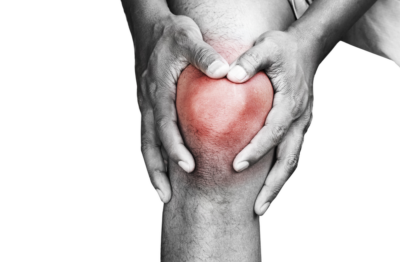 Chronic low grade inflammation causes long term pain and numerous cardiovascular, metabolic, and neurodegenerative diseases. Lifestyle is at the root of chronic inflammation, and therefore lifestyle changes are the most effective means of improving overall health.
Chronic low grade inflammation causes long term pain and numerous cardiovascular, metabolic, and neurodegenerative diseases. Lifestyle is at the root of chronic inflammation, and therefore lifestyle changes are the most effective means of improving overall health.
In January we finally launched the Be Well Chiropractic Lifestyle Program (BWCLP) with our first two workshops, one on nutrition and one covering exercise. A major element of the BWCLP is the idea that chronic low grade inflammation is at the root of most major chronic diseases and a major underlying problem in the health issues plaguing Americans. In fact, it’s the first element listed in our Core Four
BWCLP Core Four
- Decrease Chronic Pain and Inflammation
- Lifetime of Building Strength and Functional Movement Ability
- Lifetime of Building Aerobic Capacity
- Improve Body Composition
The Core Four are evidenced based, simple to measure objectives that we focus our lifestyle education towards. We developed the Core Four after examining thousands of pages of research papers and correlating it with our decade plus of experience working with thousands of different people. We identified that the healthiest patients we worked with exemplified the objectives of the Core Four.
One of the primary concepts we try to get across to participants in our BWCLP is that chronic inflammation is the result of both diet AND physical inactivity. Due to the popularity of different diets which claim to be “anti-inflammatory,” there is a notion that inflammation levels can be controlled through dietary means alone. Moreover, people avoid physical activity due to fear of it causing more pain and inflammation. We hear all the time that people are unable to exercise due to chronic pain; ie. “I can’t run because I have bad knees,” “I can’t do ‘X’ activity because I have ‘Y’ problem.” The opposite is actually true. Inactivity is worse for inflammation and joint problems and increasing physical activity improves those issues (within reason of course).
We tell anyone who will listen that diet is key for weight loss, but exercise is what makes us overall healthy. Exercise accomplishes physical adaptations that improve health far more effectively than diet alone. In other words, if you are improving your diet but not increasing physical activity levels and exercise you are missing out a large part of what improves your overall health.
This concept was driven home in a paper published in March of 2020, in the Journal of Sports Medicine and Health Science. The paper was titled “Inflammation, Physical Activity, and Chronic Disease: An Evolutionary Perspective,” and investigated the links between lack of activity and increased systemic inflammation.
Inflammation is an important part of our body’s healing process. If you suffer an injury or encounter some type of virus or bacteria, the body will initiate the healing process by increasing inflammation local to the injury or as part of the overall response to the pathogen you encountered. Acute inflammation is very rarely a problem for otherwise healthy people. Inflammation becomes a problem when it is chronic. Chronic low grade inflammation is the long term presence of low amounts of inflammation.
“Low grade inflammation is emerging as a common feature of of contemporary metabolic, psychiatric, and neurodegenerative diseases. Decreased physical activity and increased abdominal adiposity are associated with persistent systemic low grade inflammation.”
In other words, chronic low grade inflammation is thought to cause numerous chronic diseases and is caused by increased body fat around the mid section and lack of exercise.
How is it that lack of activity could cause inflammation and increasing activity actually decreases inflammation?
For the sake of keeping this article short, I will give a quick summary. I will post the citation to the paper at the bottom of this article for further reading.
In short, physical inactivity causes two major issues that lead to inflammation: loss of muscle tissue, and increased adipose tissue (body fat). Muscle tissue improves metabolism and utilization of insulin and glucose (blood sugar). Increased body fat produces an increased number of inflammatory markers known as cytokines. These cytokines are thought to create additional tissue damage and raise levels of inflammation for long periods of time. This is why we place such an emphasis on not just losing weight, but improving body composition (decreasing waist circumference, decreasing body fat, increasing percent of lean mass).
Exercise and increased physical activity serves to decrease inflammation by regulating pro-inflammatory cytokines. Building muscle and increasing the number of muscular contractions through increased activity modulates metabolic activity and cytokine presence and improves your body’s ability to utilize fat as an energy substrate instead of blood sugar. In addition, moderate to vigorously strenuous exercise presents a stress to your muscles and joints. While it may be intuitive to think of this stress as possibly deleterious to joint and muscle health, the stress actually serves to improve joint health by forcing your body to employ numerous repair mechanisms that increased strength of cartilage, ligaments, tendons, and muscles.
While the processes involved in inflammation regulation in the body are far more complex than I am making them out to be, the general rules still apply. If you don’t use it you lose it. Challenging your body with regular exercise and physical activity will improve more than your beach body, it will likely improve your quality of life and make you healthier overall.
Burini, Roberto Carlos, et al. “Inflammation, physical activity, and chronic disease: An evolutionary perspective.” Sports Medicine and Health Science 2.1 (2020): 1-6.

